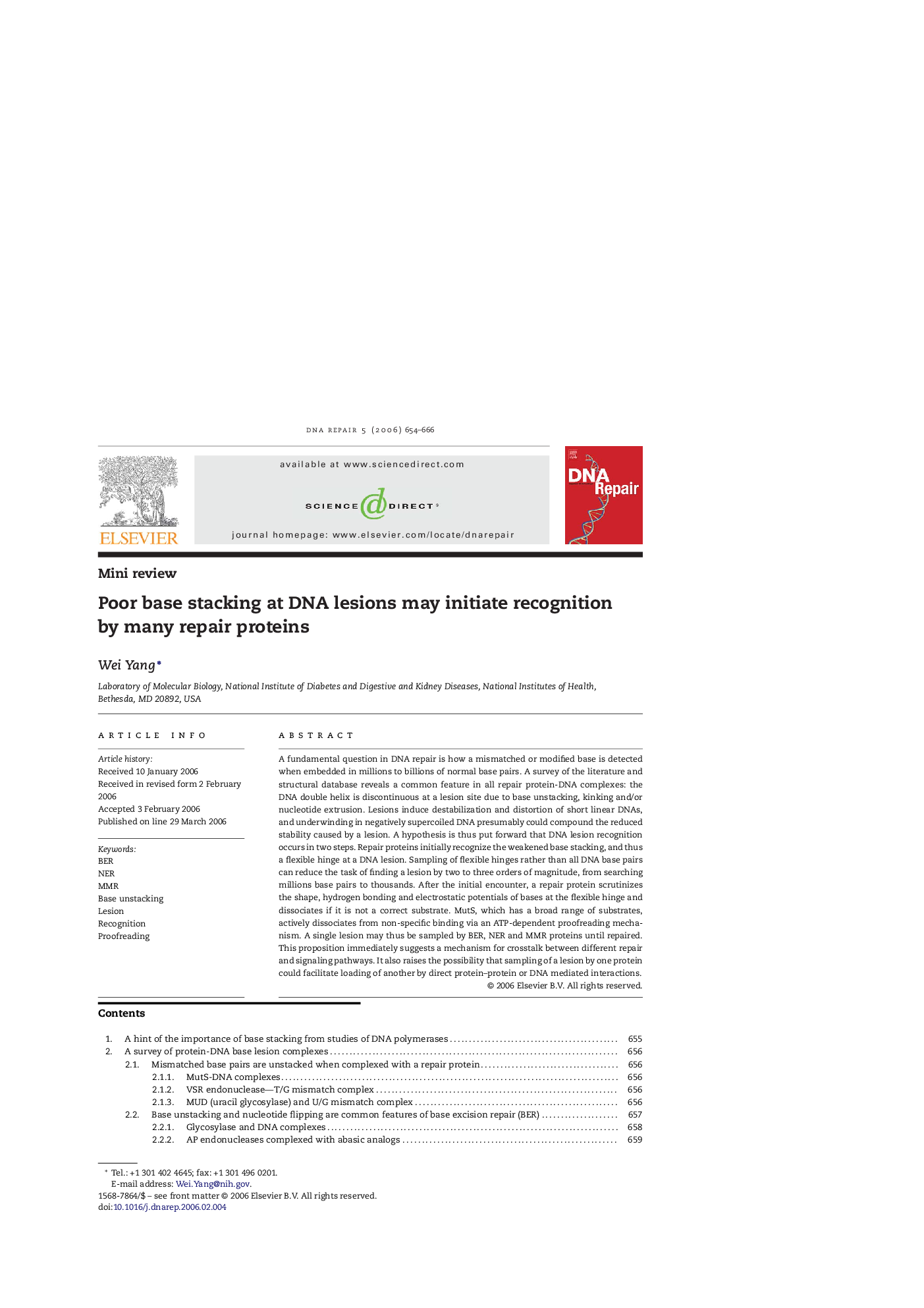| Article ID | Journal | Published Year | Pages | File Type |
|---|---|---|---|---|
| 1981141 | DNA Repair | 2006 | 13 Pages |
A fundamental question in DNA repair is how a mismatched or modified base is detected when embedded in millions to billions of normal base pairs. A survey of the literature and structural database reveals a common feature in all repair protein-DNA complexes: the DNA double helix is discontinuous at a lesion site due to base unstacking, kinking and/or nucleotide extrusion. Lesions induce destabilization and distortion of short linear DNAs, and underwinding in negatively supercoiled DNA presumably could compound the reduced stability caused by a lesion. A hypothesis is thus put forward that DNA lesion recognition occurs in two steps. Repair proteins initially recognize the weakened base stacking, and thus a flexible hinge at a DNA lesion. Sampling of flexible hinges rather than all DNA base pairs can reduce the task of finding a lesion by two to three orders of magnitude, from searching millions base pairs to thousands. After the initial encounter, a repair protein scrutinizes the shape, hydrogen bonding and electrostatic potentials of bases at the flexible hinge and dissociates if it is not a correct substrate. MutS, which has a broad range of substrates, actively dissociates from non-specific binding via an ATP-dependent proofreading mechanism. A single lesion may thus be sampled by BER, NER and MMR proteins until repaired. This proposition immediately suggests a mechanism for crosstalk between different repair and signaling pathways. It also raises the possibility that sampling of a lesion by one protein could facilitate loading of another by direct protein–protein or DNA mediated interactions.
